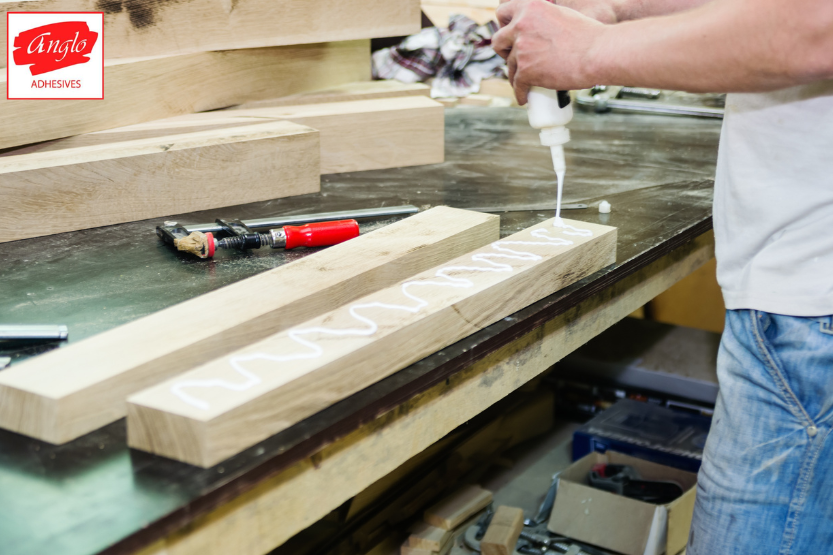Blog
Guide to Glue Bond Strength: What You Need to Know

In adhesives, achieving a strong and enduring bond is the ultimate goal. From crafting intricate furniture to repairing household items, a reliable glue bond forms the foundation of countless projects. But what exactly is glue bond strength, and how can you maximise it for flawless results? This guide delves into these questions, equipping you with the knowledge to create successful and long-lasting bonds.
Understanding Glue Bond Strength
At its core, glue bond strength refers to the adhesive’s ability to resist separation between two bonded surfaces. It’s essentially a measure of the adhesive’s tenacity, expressed in units like pounds per square inch (PSI) or megapascals (MPa). A higher glue bond strength signifies a more robust bond, capable of withstanding greater pressure or stress.
Several factors influence glue bond strength. The first consideration is the surface properties of the materials to be joined. Rough or porous surfaces, like wood, often provide better mechanical adhesion compared to smooth, non-porous ones like metal or glass. The adhesive can interlock more effectively with a textured surface, leading to a stronger bond.
Material Matters
The type of adhesive chosen also significantly impacts glue bond strength. Different adhesives are formulated for specific materials and applications. A wood glue, for instance, is specifically designed to create strong bonds between wood components. Using an improper adhesive can result in a weak bond that might fail prematurely.
Anglo Adhesives caters to a wide range of glueing needs. Whether you’re a seasoned professional or a DIY enthusiast, their product line offers solutions for various tasks. We specialise in both solvent-based and water-based adhesives, ensuring compatibility with diverse materials. From industrial applications requiring high bond strength to everyday crafting projects and repairs, Anglo Adhesives provides the right adhesive to keep your world securely bonded.
Maximising Glue Bond Strength: Practical Tips
Now that we understand the fundamentals, let’s explore techniques to maximise glue bond strength. The first step is thorough surface preparation. Clean both surfaces meticulously to remove dirt, grease, and oils that can hinder adhesion. Depending on the materials, sanding or scuffing the surfaces can further enhance mechanical bonding by creating a slightly rough texture.
Next comes adhesive selection. Choosing the right adhesive is crucial. Carefully select an adhesive specifically designed for the materials you’re bonding. Adhesive companies often provide detailed information on bond strength for various materials on their product labels or websites. Don’t hesitate to consult a professional for expert advice on selecting the most suitable adhesive for your project.
Application Matters for Glue Bond Strength
Applications also play a vital role. Ensure a clean, even spread of the adhesive on both surfaces. The manufacturer’s recommended application thickness is crucial. Applying too little adhesive might compromise bond strength, while using too much can lead to a weak and messy joint.
Clamping for Success
For thicker adhesives, clamping pressure is essential. Clamping forces the adhesive into any surface irregularities, promoting better contact and stronger adhesion. Follow the recommended clamping time as specified by the adhesive manufacturer. This allows the adhesive to achieve optimal contact and begin the curing process.
Patience is Key: Curing for a Lasting Bond
Curing time is another important factor. Allow the adhesive ample time to cure and develop its full bond strength. Rushing the process can result in a weak bond that might fail prematurely. Refer to the product information for recommended curing times, which can vary depending on the adhesive and environmental conditions. Some adhesives cure quickly at room temperature, while others might require heat or additional activators.
Advanced Tips for Glue Bond Strength
For optimal results, consider these additional tips. Hence, environmental conditions can affect glue bond strength. Ideally, apply adhesive at room temperature and avoid extreme humidity or cold. Some adhesives require activation by heat, moisture, or a chemical activator. Moreover, always follow the manufacturer’s instructions for proper activation methods to ensure optimal performance.
Testing for Confidence
Testing a small, inconspicuous area can be a wise step. This allows you to assess the bond strength and compatibility of the adhesive with your chosen materials before committing to a larger project. This small test can give you peace of mind and prevent potential rework.
Key Takeaways
By understanding the concept of glue bond strength, following these practical tips, and partnering with Anglo Adhesives for your adhesive needs, you can achieve strong and lasting bonds in all your glueing endeavours. With a focus on both industrial-grade and user-friendly options, Anglo Adhesives boasts a comprehensive selection of glues. No matter if you’re tackling heavy-duty tasks or creative endeavours, we have the perfect glue to ensure a strong and lasting bond.